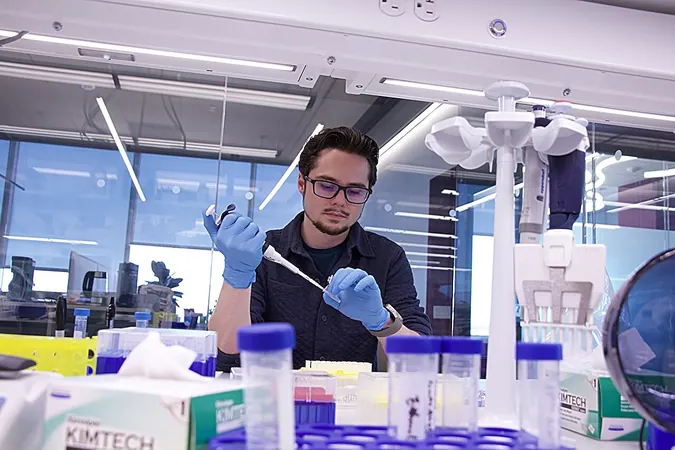
Revolutionary Breakthrough in Genetic Engineering: Meet the Game-Changing Tool That Does It All!
2025-01-08
Author: Noah
A new dawn has arrived in the field of genetic engineering, ushering in possibilities once deemed unattainable. Just like the iPhone revolutionized communication by merging a plethora of devices, researchers have struck gold by developing a remarkable tool that streamlines gene editing and expression regulation into a single, powerful platform.
In a groundbreaking study published in *Nature Communications*, scientists from the Center for Precision Engineering for Health (CPE4H) at the University of Pennsylvania have unveiled the minimal versatile genetic perturbation technology (mvGPT). This innovative tool can precisely edit genes while simultaneously activating or repressing their expression—capabilities that could transform the treatment of various genetic diseases.
“Not all genetic diseases arise merely from faults in the DNA blueprint,” explains Sherry Gao, a prominent professor at the University of Pennsylvania and the study's lead author. For instance, conditions such as type I diabetes can stem not just from genetic errors but also from the levels of gene expression. This innovative approach allows us to address both aspects with the same tool.
The Future of Genetic Editing is Here!
Historically, tackling multiple genetic anomalies in one cell meant juggling several distinct tools, each dedicated to specific tasks. This cumbersome method has now been upended. Tyler Daniel, a doctoral candidate and co-author of the research, elaborates, “We aimed to create a unified platform that could efficiently edit DNA, while also regulating gene expression to either enhance or suppress it.”
At its core, mvGPT integrates an enhanced version of the "Prime Editor"—a sophisticated tool for modifying DNA sequences—with existing technologies that control gene expression. What sets mvGPT apart is its ability to execute these functions independently and concurrently. Daniel likens it to fixing a car's navigation system while simultaneously adjusting the stereo volume and air conditioning—each operation can occur without interfering with the others.
Precision Like Never Before
The potential of mvGPT was tested on human liver cells afflicted with a mutation responsible for Wilson's disease. Remarkably, the researchers successfully removed the mutation, increased the expression of a gene important for treating type I diabetes, and suppressed another gene linked to transthyretin amyloidosis—all at once and with impressive precision.
Moreover, the compact nature of mvGPT means it can be delivered into cells with ease, utilizing various delivery methods including strands of mRNA and viral vectors—common tools in genetic editing. This efficiency marks a significant advancement in the field, as fewer components need to be transported into the target cells.
Gao emphasizes the simplicity and effectiveness that this single tool brings to genetic manipulation: “Having one tool that can accomplish all these tasks simultaneously simplifies the entire process, minimizing the complexity of logistics involved in gene editing.
As scientists explore the capabilities of mvGPT further, this technology stands to revolutionize how we approach genetic diseases, paving the way for innovative treatments and deeper understanding of genetic functions. This breakthrough may very well be the future of personalized medicine—stay tuned for the next big revelation!









 Brasil (PT)
Brasil (PT)
 Canada (EN)
Canada (EN)
 Chile (ES)
Chile (ES)
 Česko (CS)
Česko (CS)
 대한민국 (KO)
대한민국 (KO)
 España (ES)
España (ES)
 France (FR)
France (FR)
 Hong Kong (EN)
Hong Kong (EN)
 Italia (IT)
Italia (IT)
 日本 (JA)
日本 (JA)
 Magyarország (HU)
Magyarország (HU)
 Norge (NO)
Norge (NO)
 Polska (PL)
Polska (PL)
 Schweiz (DE)
Schweiz (DE)
 Singapore (EN)
Singapore (EN)
 Sverige (SV)
Sverige (SV)
 Suomi (FI)
Suomi (FI)
 Türkiye (TR)
Türkiye (TR)
 الإمارات العربية المتحدة (AR)
الإمارات العربية المتحدة (AR)